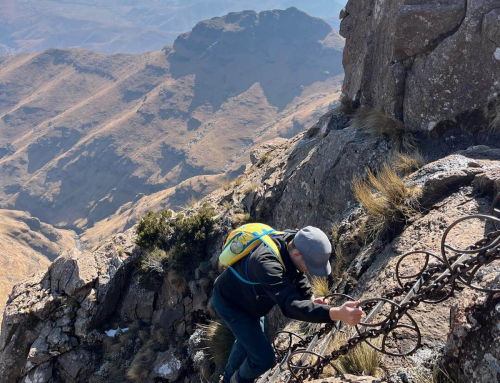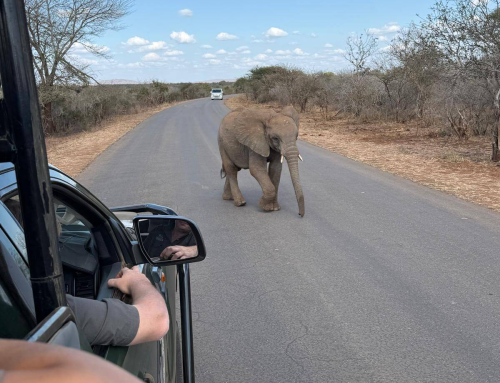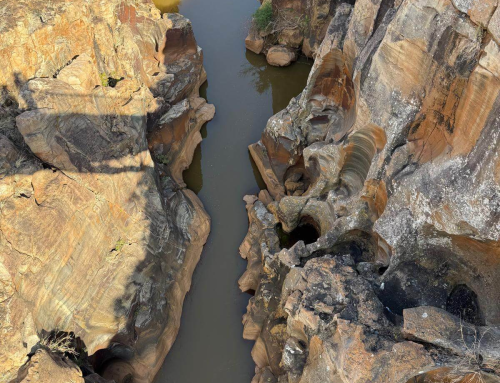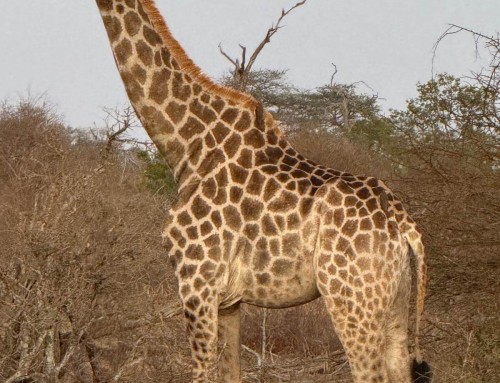Eswatini (formerly Swaziland)
You may be asking yourself, what’s in Eswatini? Why would I ever go? Well, if you love dramatic mountain vistas, beautiful nature for as far as the eye can see, and helpful, friendly people, you’ll love Eswatini. While we were only able to spend three days here on the western side, we always had a mountain view. It was incredible! The weather in the winter (June-August) is just perfect with cool mornings and evenings but warm winter sun during the day.
This nation, formerly known as Swaziland has been inhabited by the Swazi people since the 15th century. In 2018, the King officially changed the name to Eswatini. You’ll see signs for both throughout the country. Eswatini appears to have a wide variety of economic disparity. The rural areas are experiencing severe poverty, while in the big city of Mbabane, the people are very well put together. Many men and women were coming from their office jobs in beautiful suits, dressed very well. We only encountered friendly, helpful people no matter where we went throughout the country. We even got a flat tire and a rural lady called her son to help us change it!
Entering Eswatini
Most people drive into Eswatini as the international airport (King Mswati III International Airport) is only flying to Johannesburg, South Africa and back daily. The land border crossings are very easy. We went through the Border Post Matsamo in the north coming from South Africa. You have to park your car on the South African side, walk into the immigration office to get an exit stamp. The guard at the gate will write down your license plate number, check the border crossing letter you got from your rental car company (you will have to pay extra for this piece of paper but border patrol won’t let you through without it so get it before you leave the rental car location). Pull through and park on the other side. Then get out again and go to the Eswatini immigration counters. Here they will stamp your passport with an entrance stamp and you have to pay 100szl for the car to enter. Get back in the car, give the border patrol at the gate all the documents, and you’re good to enter the country. It’s honestly pretty easy. Pro tip: the border crossings are not open 24 hours a day. They are usually open 7am-8pm but check the specific location you are going through to make sure you don’t get stuck.
Cellphones in Eswatini
Although Eswatini is landlocked by South Africa and Mozambique, don’t make the same mistake we did. Your South African sim card most likely won’t work in Eswatini. When we were near the borders, we got some signal but as soon as we went farther into the country, it dropped. So plan ahead and either get an eSim with Airalo or stop at any MTN Eswatini for a local sim card. Since there are so few roads in Eswatini, we actually made it work without a sim card by just downloading the Google Maps offline map before we entered.
Currency
Eswatini has its own currency, Swaziland Lilangeni (SZL) but the plural is Swaziland Emalangeni. It is currently pegged at par with the South African Rand (ZAR). Many people actually accepted our South African rand as currency although it is different. Credit cards were accepted everywhere as well so we didn’t have an issue paying. Most places even accepted the tap of our cards through our phone which was super convenient.
Safety
Eswatini is very safe. We never saw any broken windows, theft, or any dangerous activity. In fact we learned that the police are so afraid of being reported for bribery that they actually won’t even take your driver’s license in case someone sees them taking something from you and thinks it’s a bribe. Instead they’ll just look at you holding it up. The police were very upstanding in Eswatini.
Where to Stay in Eswatini
Nature is the thing to do here. There are hundreds of nature lodges. Depending on how active or relaxed you want to be, will determine what type of lodging you want to stay at. If you like sleeping in luxury sheets or roughing it in a sleeping bag, there is a place for you. Many lodges offer different activities like hiking trails, mountain biking, motorbikes, or relaxing vistas and spas. So determine what you want to do and enjoy!
We met many people spending just a day or two in the country while driving through. But others spent a few weeks exploring the mountain sides going between lodges and hiking. We were only able to spend three days in the country so we hit the highlights on the western side and really enjoyed it.
As much as we like big cities, we decided not to stay in Mbabane and I think that was a good idea. We chose Lobamba and it paid off. This area is super nice and centrally located to all the things we did. The golf course, embassy buildings, and cuter hotels/inns are an indication of the more affluent area. There are also a few shopping centers and restaurants so no need to head into the city center of Mbabane if you don’t want to.
What To Do in Eswatini
Shopping
Mbabane is the most populous city in Eswatini with just under 100,000 residents. It is one of the two capitals, serving as the executive capital. It’s worth a stop to the downtown area. All the parking is paid but it’s only 2.5 rand for 30 minutes making it very affordable. For street parking, a parking attendant will walk up to your car and print the receipt for you which you put on your dashboard. The Swazi Plaza is a decent shopping area with everyday things like groceries, clothes, cellphones, and home goods stores. There are vendors selling fruits, veggies, and clothes on the streets around it.
Next door is the Mbabane Craft Market which we wouldn’t recommend. It seems to have been popular before but now it has gone downhill. There are very few stalls left and it seems run down now. If you want some beautiful souvenirs, instead head over to the Ngwenya Glass. This factory has been making beautiful products like stemware, vases, bowls, and decorative figurines all from recycled glass. You can also go on a factory tour and see the glass being made on weekdays. It’s definitely worth checking out. Make sure to visit the other shops behind the glass factory for some really classy, well made goods and souvenirs.
Speaking of souvenirs, there are two other craft places we really like over near Lobamba. First is House on Fire on MR27 on your way to Malkerns. This place is an artistic community consisting of a beautiful music venue, outdoor lawn, super cute souvenirs shops with funky jewelry, and a gorgeous outdoor food court with patio seating among beautiful manicured gardenscapes. It’s the perfect place to grab lunch or a drink. If you like music, they put on two huge music festivals every year! The stores are very classy and sell beautifully made Eswatini goods like purses, herbal skin care, and home goods. The food is delicious here too. We had a delicious salad and chicken curry while sitting on the outdoor patio. Definitely recommend.
Second place is Swazi Candles in Malkerns. It started as a handmade candle shop and you can still watch the people hand make unique and interesting candles. It has now branched out to be a complex of other stores that also sell different handmade goods. There is a coffee shop here offering light food options for lunch. It’s a nice stop and great if you want a few things to take home with you.



Swazi History and Culture
The Mantenga Nature Reserve and Cultural Village is definitely worth a visit. It’s smaller so you don’t need a ton of time to see all three things: the traditional show, village, and waterfall. We’d suggest getting there an hour before the show time or staying an hour after the show to see the village and the waterfall. They put on an amazing traditional dance show twice a day: one at 11:15 and one at 15:15. It is honestly one of the best dance shows we’ve ever seen. The performers harmonize while singing and the athleticism of dancers are incredible. It’s definitely worth it! Admission to the grounds is 150 per person. Pull into the parking lot and someone will greet you to take you on a guided tour of the huts. There are enough guides that they take each group individually so you don’t have to wait for a time or other people to arrive and no prebooking is needed. Just show up and a guide will take you. They have built a small village of traditional huts Swazi people used to live in. The guide will tell you all about village life and how men and women operated in this society. You can enter the huts and take pictures. The people in the village are the performers who put on the show. The guide will also answer your questions. It’s very well done and well maintained for a traditional village. Afterwards you can walk or drive the 1 km road to see a beautiful waterfall on the property. All in all we’d recommend around 2 hours total: 30 min village tour, 45 min traditional show, and 30 min walk to waterfall.



The only place we could find any history of Eswatini was at the Swaziland National Museum. It cost 100 per person but honestly I don’t think it was worth it. There are two sections to the museum. One side gives lots of panels of history from 1870 to 1990 with old photographs. This was the most interesting part but it felt very long and you have to read a lot. I think most of this could be found online. The second section is taxidermied animals with some panels to read about the resources on the African continent. It took us less than an hour and it wasn’t as informative as we’d like, so it’s a pass from us.
Restaurants
The Velvet Monkey is an absolutely adorable spot. With stunning greenery, a backdrop of mountains, green velvet couches, and amazing food, it’s a great lunch spot or romantic dinner spot. House on Fire has Malandelas Restaurant and a deli that serves up amazing salads, sandwiches and curries. We recommend not only the food but the vibe and views here are stunning. Luxy Garden Restaurant serves legit Chinese food and it’s amazing. We recommend the dry fried green beans and fried rice noodles!
Nature in Eswatini
There are a ton of hiking trails in the mountains and plains, but you should know that almost all hiking trails require a payment to get onto the land, a permit, and some even require guides. So it’s not as easy as just driving up to the trail head and going. However if you are staying at a lodge, most will provide these services or you’ve paid to get on their land so you should be good to go.
There is an amazing zipline canopy tour at Malolotja Canopy Tour. For 800 rand a person, you get to zip through 11 lines of beautiful scenery. It takes about 2 hours and you get to enjoy some of the most stunning views of the Malalotja National Park.
If you’re more into white water rafting, contact the outfitter Swazi Trails to book your white water rafting experience on the Usutu River. The company also offers mountain biking experiences with a guide as well. It’s a wild ride through some of the most amazing scenery. Check out other companies who provide this service depending on where you are staying.
To see a rhino conservation park with both the black and white rhinos, head over to the eastern side of the country to either Mkhaya Game Reserve or Hlane Royal National Park. Both places offer guided safaris, lodging, and upclose encounters with rhinos.
Conclusion
All in all, Eswatini took us by surprise. Its dramatic mountains and views had us drooling. The upscale restaurants, funky stores, and dreamy landscaping (holy cool flowering plants) made us rethink this once unknown country to us. If you’re taking a trip to South Africa, it’s worth a few days’ stop to experience all of Eswatini.
Discover more from Penley Perspective
Subscribe to get the latest posts sent to your email.




